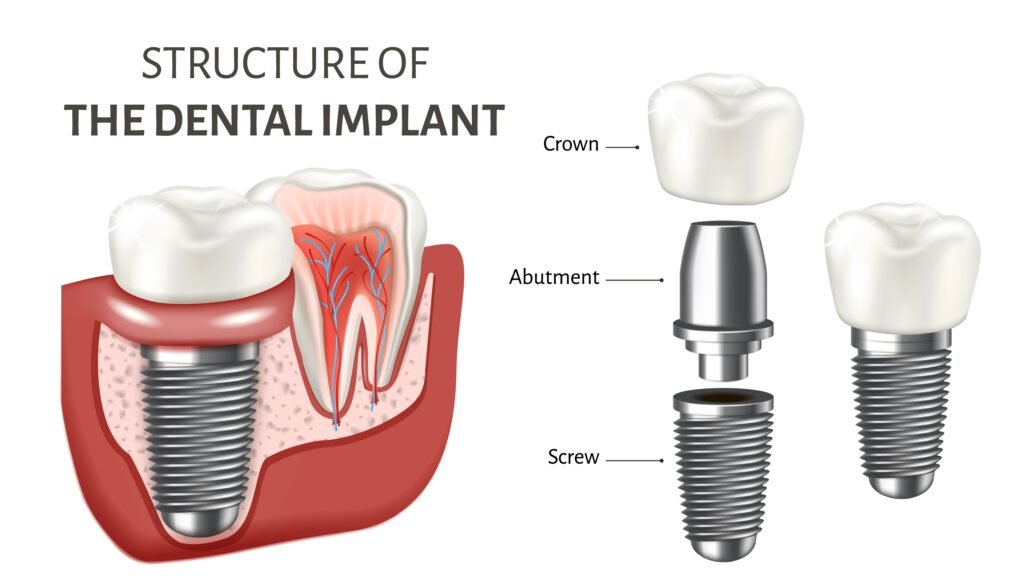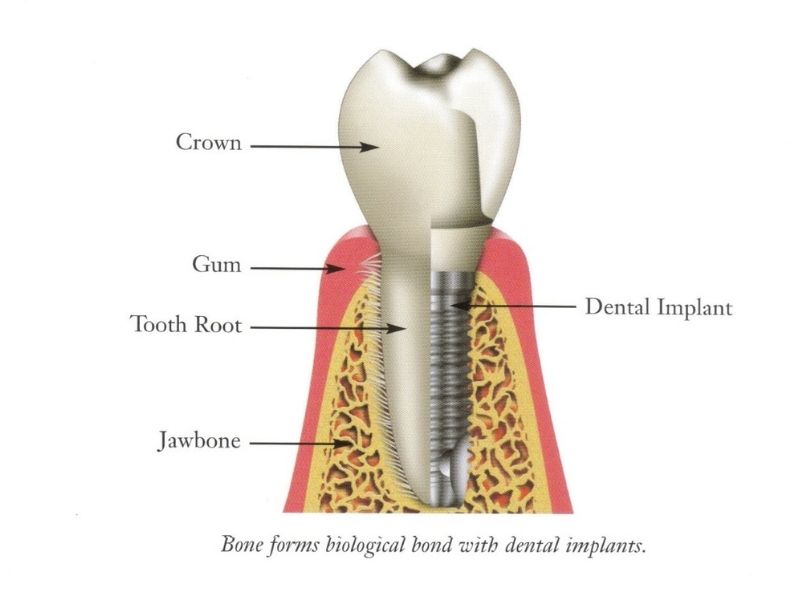Implants
Thanks to the rapidly developing technology, innovations are also taking place in the…
Read MoreSame-day implant (Teeth in a Day) means you leave with your new teeth on the same day…
Read MoreDental implants are designed to provide a foundation for replacement teeth that look, feel, and function like natural teeth.
Those who have lost teeth can regain the ability to eat virtually anything and can smile with confidence, knowing that their teeth appear natural and their facial contours will be preserved. The implants are tiny titanium posts that are placed into the jawbone where teeth are missing.
The bone bonds with the titanium, creating a strong foundation for artificial teeth. In addition, dental implants can help preserve facial structure, preventing the bone deterioration that occurs when teeth are missing.
Dental implants are changing the way people live! People are rediscovering the comfort and confidence to properly eat, speak, laugh, and enjoy life.
The Dental Implant System
Modern dentistry applications' main goal is to achieve maximum aesthetic and functional results with minimal loss of tissue. In today’s dentistry, dental implants are the optimal way to compensate for tooth loss.



In which cases is the implant applied?
As an optimum, if the missing tooth treatment is to be performed for a single tooth, it is recommended to be treated with an implant rather than restoring it with a bridge, as it will be more protective.
Healthy teeth need to be crowned as a result of filing down in order to apply a bridge prosthesis. Replacing these bridges at regular intervals is not an economical solution. Instead, with the implants placed in the missing tooth gap, the missing tooth can be treated without damaging the healthy teeth next to it.
Total Edentulism
If there are no teeth left in the mouth, implant-supported dentures can provide the comfort that the person needs since removable dentures are not used due to the nausea reflex and insufficient retention of the denture.


The stages of implants
Planning and Examination
Implants are performed with a multidisciplinary approach. It is a team effort in which the surgeon places the implant in the jawbone and the prosthesis specialist applies the prosthesis over the implant.
The implant can be applied to anyone except people with certain systemic diseases, such as uncontrolled diabetes. Since the implants are made of titanium and are positioned in place of the natural root of the tooth, they are tissue-compatible and do not cause any allergic or toxic discomfort.
During the examination stage, the relationship between the gums, lower jaw, and upper jaw, and the relationship between the teeth are examined with a detailed intraoral examination. In order to complete the treatment process with the minimum amount of error, apart from standard radiographs, three-dimensional (3D) tomography is requested in complicated cases to determine the exact measurement model of the jaw and to plan the areas where the implants will be placed.
Placement of the Implants
The accurate planning process is the starting point of the healthiest treatment. In addition, the expert, experienced team, necessary equipment, and necessary hygienic environment are the essentials for the operation to be performed. Implants are applied with local anesthesia like other dental treatments. However, in some cases where the jawbone is not sufficient and a tissue addition procedure called a graft is required, in long operations or in extremely stressed patients, the operation can be performed comfortably under general anesthesia or sedation.

Making the Prostheses
At the end of the operation, a period called osseointegration will start in which the implant will integrate into the bone surface. This process may differ depending on bone structure. After the process is complete, the superstructure is formed. After the operation, temporary prostheses are made for the continuation of aesthetics and function until the permanent prostheses are made.







